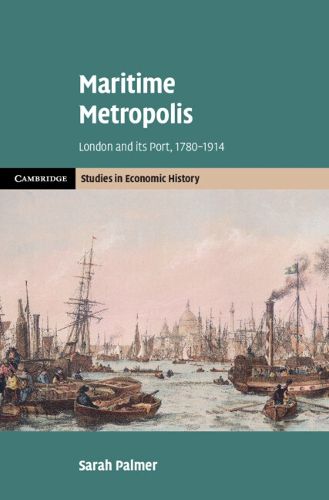Readings Newsletter
Become a Readings Member to make your shopping experience even easier.
Sign in or sign up for free!
You’re not far away from qualifying for FREE standard shipping within Australia
You’ve qualified for FREE standard shipping within Australia
The cart is loading…






Nineteenth-century London was not only the greatest city of its time but it had an equally immense port. Although the relationship between the two physically shaped the city and profoundly affected the lives and livelihoods of its inhabitants, historians have always told their stories separately. Sarah Palmer's authoritative work instead paints a picture of London as a maritime hub driven by trade, shipping, marine insurance, shipbuilding and meeting the needs of seafarers ashore. Drawing on disparate archival materials from dock company records, the National Archives, the London Metropolitan Archives and more, she reveals both the economic importance of international and domestic sea-borne trade and the unique urban geography it created. In creating this more interconnected understanding of Britain's capital, Palmer argues that the nineteenth-century transition from sail to steam didn't just affect London's port, but transformed the city and its economy with an impact comparable to that of the railways.
$9.00 standard shipping within Australia
FREE standard shipping within Australia for orders over $100.00
Express & International shipping calculated at checkout
Nineteenth-century London was not only the greatest city of its time but it had an equally immense port. Although the relationship between the two physically shaped the city and profoundly affected the lives and livelihoods of its inhabitants, historians have always told their stories separately. Sarah Palmer's authoritative work instead paints a picture of London as a maritime hub driven by trade, shipping, marine insurance, shipbuilding and meeting the needs of seafarers ashore. Drawing on disparate archival materials from dock company records, the National Archives, the London Metropolitan Archives and more, she reveals both the economic importance of international and domestic sea-borne trade and the unique urban geography it created. In creating this more interconnected understanding of Britain's capital, Palmer argues that the nineteenth-century transition from sail to steam didn't just affect London's port, but transformed the city and its economy with an impact comparable to that of the railways.